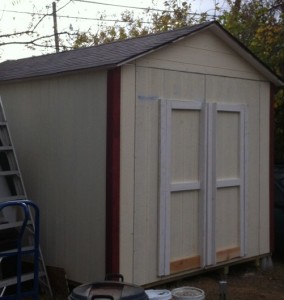Last spring, I met Susan Pollard at a show at White Rock Lake. I was a new “keeper”, and being the Bohemian that I am – gravitated right to Susan and we talked bees, hives, and more when we both had spare time from our booths.
Over the last year of research – I have come to the realization that there are several goals that I wish to achieve through my being a keeper of the bees.
- To provide as “natural” of a setting as I can for the honeybees
- To work my hives in a “chemical-free” method
- To work with “survivor bees”
- Allow the bees to produce naturally drawn comb & cell size
Natural
Yes – I realize that the words “natural” and “beekeeping” seem to be an oxymoron. What really is “natural” about beekeeping? I’m not hollowing out trees for them to live in… However – when bees do swarm – to multiply and find a new home – they often take up residence in man-made structures. So… My real stated goal should be to work in an “Apicentric Beekeeping” manner.
Chemical Free
There are chemicals that are used by many beekeepers that – yes – may kill out an invasive mite (Varroa, etc.) – however, there are honeybees that have natural tendencies to live more hygienically than others… and more “chemical-free” methods for dealing with unwanted invaders of the hive. Again – a more “Apicentric” method to beekeeping.
Survivors
Bees that display a higher propensity to be hygienic (groom more often, or in more detail) – tend also to have lower health problems. A strong colony will survive adverse conditions – when a weak colony may not. It is my goal to work with strong “survivor” strains (Darwinian? Yes!) and allow the weaker colonies to pass on… instead of trying to manage them with chemicals and extreme invasion of their habitat to manage mechanically.
Natural Comb & Cell Size
There is much debate as to whether forced cell size has an impact on invasive parasites (i.e. Varroa). Fact – Yes – the larger 5.2-5.7mm cell foundation allows a longer gestation time for the mites in the cell with the larval honeybees. Fact – Honeybees that are smaller also have a shorter (by 2-3 days) period in the cell before emerging.
I’m not going to force the bees to create any particular size of cell. Their own natural need to produce cells of appropriate size is a part of keeping the bees ass stress-free as possible, so that they can be strong in number, and support a prolific queen. My intention is to provide a starter strip for the bees to start their comb – then allow the bees to determine what cell sizes they need & require. After all… they have done this for a LONG time, when you consider the evolutionary age of honeybees in comparison to humans.
In conclusion – my personal goals align me with other beekeepers in the area – specifically Brandon & Susan Pollard (of Zip Code Honey – and founders of the Texas Honeybee Guild) as well as two other “Guild” members – Tim Hall and Robert “Bob” Richie.
I am now an honorary Guild member of the Texas Honeybee Guild – and our goal as a guild – is education of the public on the benefits of our buzzing pollinators, the benefits of the products of the hive, and the benefits – on a larger scale – of living “real”, local, and as self-sustaining as we can.

